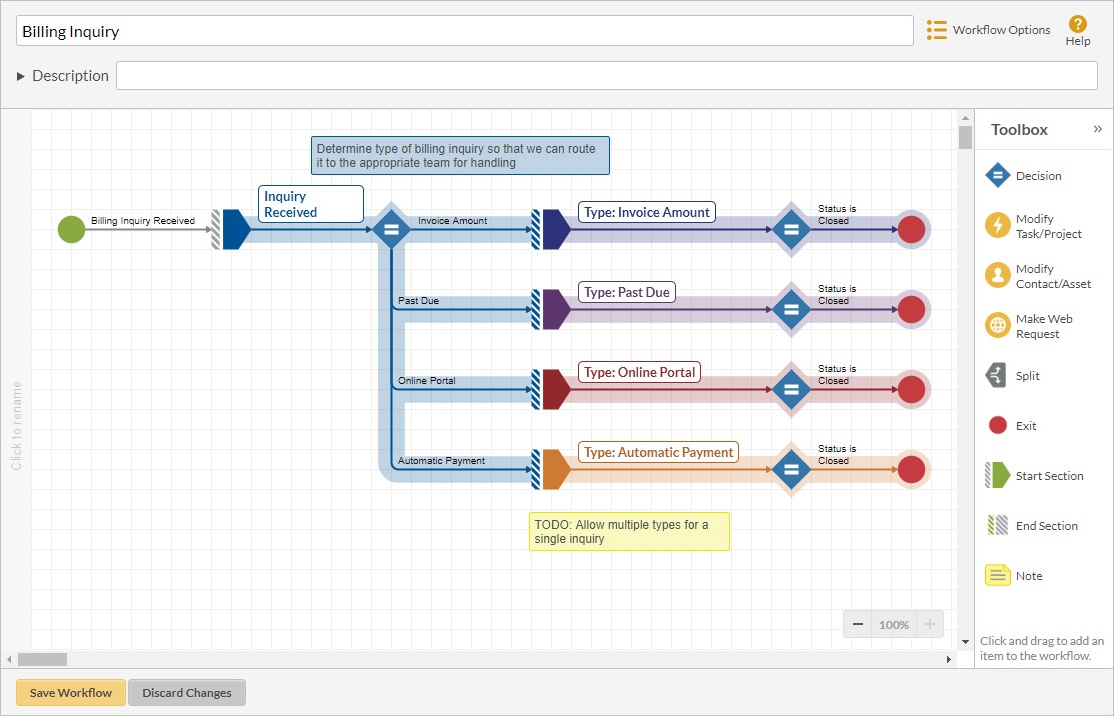Contrary to popular belief, effective and successful business architecture isn’t the product of comprehensive or properly organized maps and diagrams. It’s the result of thoroughly understanding business needs, following a path to discovery and working to achieve a positive outcome. One of today’s needs is keeping up with the ever-changing business environment. Therefore, your business architecture needs to provide you with agile tools, techniques and information that allow you to make informed, profitable decisions.
This is where responsive business architecture comes in the picture.

Characteristics of Responsive Business Architecture
This innovative type of business architecture allows organizations to carry out internal and external collaborations to answer three important questions: a) which profitable decisions should be worked on; b) why does the organization needs to work on them, and c) how will the decisions be executed? Based on these answers, firms can develop a corporate strategy that ensures value while relentlessly monitoring execution.
Internal coordination is possible through network-like connections between each business domain and two functional levels within it, namely the capability level and competency level. The first includes all the assets that support the company’s approach to design, communication, flexibility, etc. whereas the second includes assets that support the service approach, core concept, working methods, etc. The collaboration of these internal levels highlights the company’s strengths and weaknesses, allowing you to adjust resources and activities that enhance strengths and/or mitigate weaknesses.
As for external coordination, this arises when business domains intelligently scan the business environment using two outward-focused levels: the industry-market level and the governance level. The first monitors the forces of competitors, new entrants, vendors and substitutes among others whereas the second tracks the company’s commitment to shareholders, the community and the law. Together, these external levels expose opportunities and threats the company faces by sticking to its current corporate strategy. As a result, management can change its strategic direction or develop a plan for acquiring new internal capabilities and competencies.
In addition to sensing the internal and external happenings around the organization, responsive business architecture should enable users to respond via proven methods and approaches. The architecture also needs to learn from previous experiences of sensing and responding, automating some parts of the decision-making process to boost efficiency and maximize profitability.
Building Responsive Business Architecture
To develop a robust architecture that’s highly responsive to internal and external factors, all you need is the following four steps.
- Select the right business architect. The professional you choose should be able to develop tasks that deliver compelling experiences. He or she should also possess the right blend of skills and temperaments such as those related to leadership, facilitation, and negotiation.
- Establish a business process or capability model for your organization and use it as a foundation for the work ahead.
- Link this model to other business models in your organization, such as the information technology architecture, organizational chart and balanced scoreboard.
- Establish a regular routine for updating your models and maps. This can be weekly, monthly or quarterly depending on your firm’s needs for new data.
Companies that remain loyal to traditional business workflow and architecture may face the risks of stale analysis due to stale data, which ultimately leads to bad decisions that can lead to drastic consequences downstream. Therefore, embrace responsive business architecture to avoid these pitfalls, especially if you have to get things right from the first time. And remember: the more responsive your architecture is to internal and external factors, the higher the quality of insights it can deliver to decision-makers.
